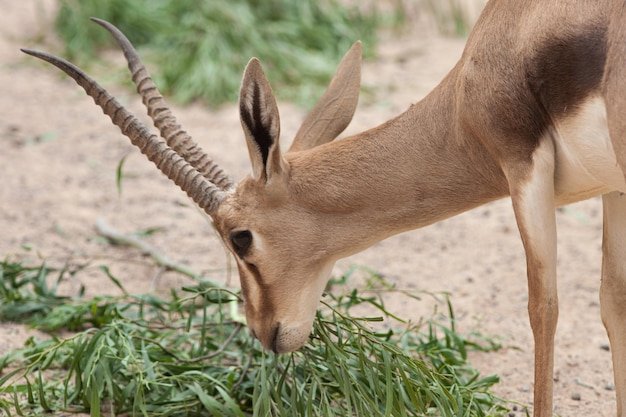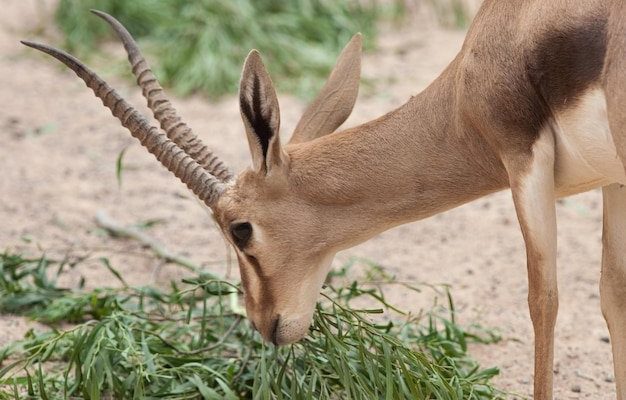
In this article, we’ll explore what gazelles eat and how they manage to survive in a world filled with such fierce competition. Think of it as a peek into their daily lives where every mouthful of grass counts and every sprint could mean life or death. Whether you’re a wildlife enthusiast or just curious about these beautiful animals, you’ll find some interesting insights here.
Understanding Gazelle Diets
Gazelles are herbivores, which means they primarily eat plants. But what exactly does that mean in practical terms? Well, their diet mostly consists of a variety of grasses, leaves, and occasionally, fruits. The specific types of plants they choose can vary depending on their habitat. For example, in open grasslands, they often munch on tender shoots that are easier to digest and packed with nutrients.
Here’s the thing: gazelles are very selective eaters. They have learned to pick out the *best* parts of plants. This selectivity helps them get the most energy from their meals, which is crucial, especially when they are trying to outrun predators. So, if you were to watch a gazelle in action, you’d see it carefully grazing and moving from one patch of lush grass to another, really taking its time to choose the right bites.
Additionally, gazelles rely on their acute sense of smell and sight to find the best food sources. Imagine being in a vast field; their keen senses help them detect nutritious plants from a distance. This ability not only aids in their diet but also plays a role in ensuring their survival in harsh environments.
Foraging Techniques of Gazelles
When it comes to finding food, gazelles have a few clever tricks up their sleeves. They often forage in groups, which allows them to keep an eye out for each other and spot predators more easily. You might picture a bunch of them standing close together, heads down, while one or two stay alert, watching for any danger. This teamwork not only makes their foraging efficient but also boosts safety.
Gazelles also exhibit a behavior known as “patch foraging.” This means they’ll visit a spot, eat the best bits, and then move on to allow the grasses to recover. It’s like they have a built-in rotation schedule for their food sources. This strategy helps maintain the health of their environment, which is vital for their continuous survival. If they eat everything in one place, they risk depleting that area of its food resources.
Furthermore, during dry seasons, when food becomes scarce, gazelles will change their foraging locations and adjust their diets. This adaptability is crucial when resources are limited. They may venture into different terrains, seeking out shrubs or other plants that can sustain them until the next rainy season brings lush growth back.
Predatory Challenges for Gazelles
Gazelles are not just cute, fast animals; they’re also prey for many predators, from lions and leopards to hyenas and crocodiles. This means that their *hunting strategies* are just as essential to their survival as their diet. One of their main survival tactics is their speed. Gazelles can reach speeds of up to 50 miles per hour! This speed lets them escape from most predators, but that’s only half of the story.
When they sense danger, gazelles employ a fascinating technique called “stotting.” This is when a gazelle jumps high into the air with all four legs off the ground, showcasing its strength and agility. You might think of it as a flashy “look at me” move designed to confuse or intimidate predators. By doing this, they can often signal to their potential attackers that they’re fit and fast, which might encourage the predator to look for easier prey instead.
Moreover, gazelles are incredibly aware of their surroundings. Their large eyes help them spot movement from afar. If one gazelle is alarmed, others in the herd quickly get the message to be on high alert. This collective vigilance is a key survival strategy. Imagine being part of a team where everyone knows to keep an eye out; it’s like a built-in warning system.
Hydration Habits of Gazelles
Although gazelles primarily get most of their water needs from the plants they consume, they can also be found drinking from rivers and lakes when necessary. It’s fascinating to think that these animals can survive in some of the driest environments. Their bodies are adapted to conserve water efficiently, which is crucial in the often arid savanna climates.
During particularly hot days, gazelles are more active in the early morning or late afternoon, allowing them to hydrate while minimizing the risk of dehydration. This behavior echoes their smart foraging techniques. Not only do they remain alert for predators, but they also manage their energy levels effectively throughout the day.
Also, gazelles have a unique ability to tolerate dehydration better than many other mammals. They can survive without water for several days, which is remarkable! This trait allows them to thrive in environments where water sources are few and far between.
Gazelles and Their Role in the Ecosystem
Gazelles play a significant role in their ecosystems. They contribute to seed dispersal because when they eat fruits and plants, they excrete seeds in different locations. This helps the growth of new plants, maintaining a healthy environment. You could say they’re like nature’s gardeners, gently spreading life wherever they roam.
Moreover, as a primary food source for larger predators, gazelles are a crucial part of the food chain. Their existence helps regulate predator populations and ensures the balance of their ecosystems. If you think about it, by simply going about their lives—eating, foraging, and running—they help sustain a whole community of life around them.
This interconnectedness highlights why the conservation of gazelles is so important. Protecting their habitats not only benefits them but also a host of other species that rely on the same ecosystems for survival.
So, there you have it! Gazelles have a complex and fascinating relationship with their environment that revolves around their diet and innovative survival strategies. From their selective eating habits to their spirited escape tactics, these animals are a testament to the wonders of adaptation.
When you think about gazelles, realize they’re not just fast and graceful; they’re also survivors with a well-crafted blueprint for life in the wild. Their strategies remind us of the delicate balance of nature, where each creature plays its part in the grand tapestry of life. Next time you hear about gazelles, you’ll know there’s so much more to their story than just elegance.

